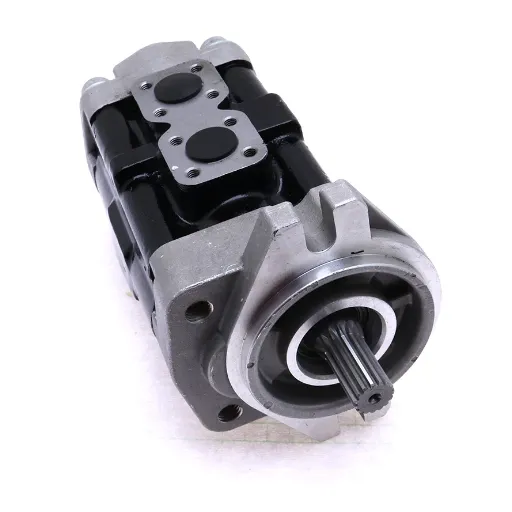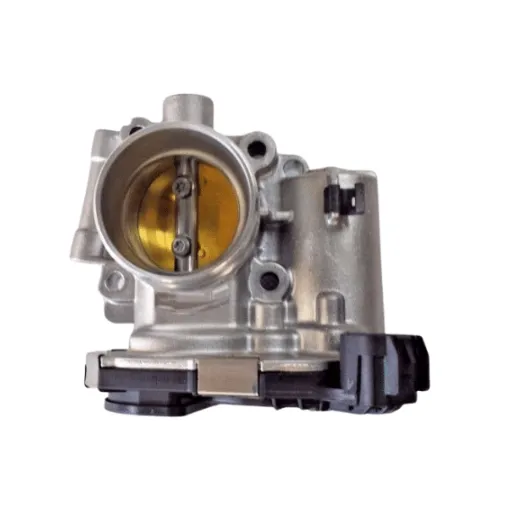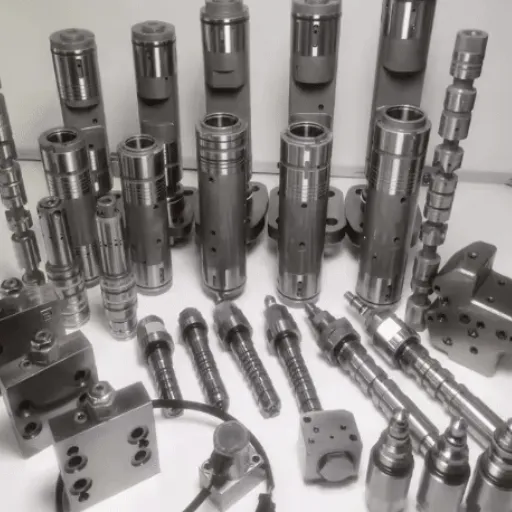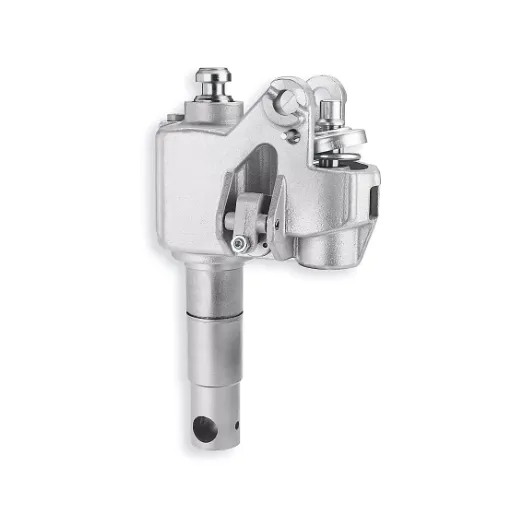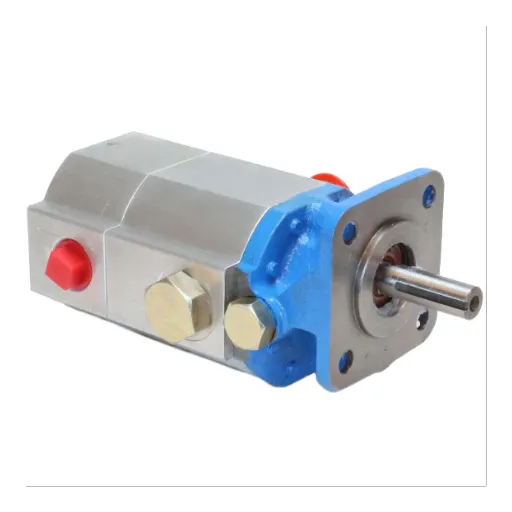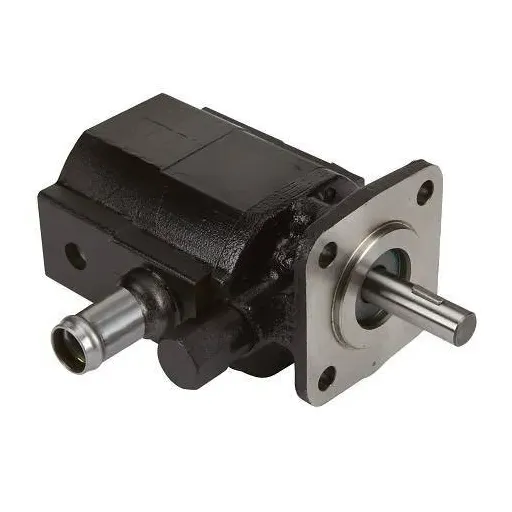The hydraulic systems serve as the really “working-essence” within your Kubota tractor to ensure smooth operation for a variety of tasks. But even the best equipment could give a bit of trouble, and hydraulic troubles could really put the production on hold and cost you heavy if left unattended. This article brings in-depth details of the major hydraulic problems faced by Kubota tractor owners and presents pragmatic, stepwise troubleshooting suggestions to help identify and solve the problems. Slow response, weird noises or leakages-from all hydraulic system issues, this guide is all you need to ensure your tractor is up and running.
Common Hydraulic Problems in Kubota Tractors
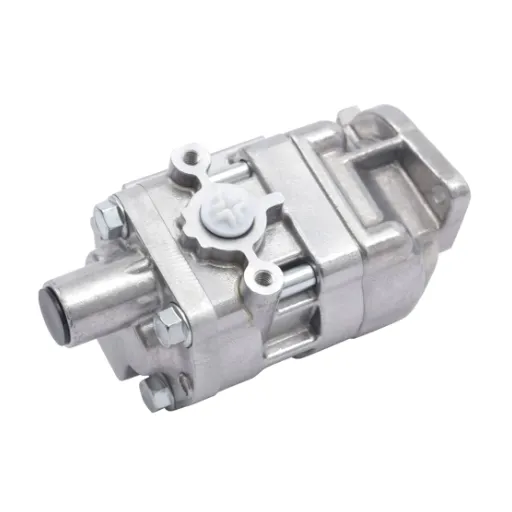
Identifying Common Hydraulic Issues
In Kubota tractors, hydraulic problems may present themselves in many different manifestations; common hydraulic problems include slow or erratic operation, odd noises, or leaking fluids. Slow hydraulic response occurs mainly when the fluid level is low, the hydraulic fluid is contaminated, or a blocked filter is restricting fluid flow. Avoiding them basically entails proper maintenance such as checking fluid levels and replacing filters whenever necessary according to the manufacturer’s directives.
Another common issue involves weird noises from the hydraulics, which might mean that the system has air trapped inside or there is a failing pump. Trapped air usually enters the system because it was incorrectly bled during servicing, or there might be an oil line leak. One should conduct a thorough inspection of seals, gaskets, and their connections to locate any leaks so that they can be eliminated. After servicing, proper priming is essential to avoid these problems.
Visible hydraulic fluid leaks can often be traced back to defective hoses, seals, or fittings. These components may be susceptible to wear over time due to pressure conditions and environmental surroundings. Consider replacement if found injured or otherwise worn out to prevent any compromise in integrity of a hydraulic system. Inspect all hydraulic connections and components frequently while minor concerns can develop into major repairs if given chance. It is because with constant maintenance your tractor hydraulic system will always perform optimally irrespective of the operational demands placed on it.
Typical Symptoms of Hydraulic System Failures
Late identification of the usual symptoms of an hydraulic system could recognize for repairs and preventing severe damage. Lessened performance and slow operations are among the conspicuous symptoms for an hydraulic system. Examples of slow operations are that the speed of a hydraulic component decreases and force is lessened; these are, for instance, a loader, a bucket, or an implement. Reduced performance points towards fluid contamination, low levels of hydraulic fluid, or internal leaks in the system.
Other common symptoms include other abnormal noises-it whines, knocks, or screeches, coming from the hydraulic pump or the system; the noises denote cavitation, meaning air comes into the hydraulic fluid, or sometimes they denote mechanical wear in the pump. If such mechanical wear is left unaddressed, it will never cease advancing into a more serious damage.
Also, the failure of a hydraulic system may show itself via external leaks. These leaks may be seen as pools of hydraulic fluid under the machine or as drips from hoses, fittings, or seals. With leaks, the emanation of hydraulic fluid becomes conspicuous, and also the pressure of the system drops, hence loss of efficiency. Immediate attention, repairs, and checking of connections to such leaks become very important if great performance and further system damages are to be averted. Timely intervention at the noted symptoms ensures better performance and gives longevity to the whole hydraulic system.
Impact of Hydraulic Problems on Loader and Backhoe Performance
Hydraulic issues could dull the performance of loaders and backhoes and hence compromise their efficiency and possibly culminate in downtime. A few of these effects on the machine are described below in detail:
Reduced Lifting Capacity
Hydraulics have to hold up lifting heavy loads. This pressure leak or loss makes that machinery from being able to lift materials up to their specified weight capacity of any meaningful amount of force. Thus a loader with hydraulic power could approximately reduce the efficiency of its lifting after 20-30 percent.
Delayed Response Time
Delays show slow response times for hydraulics acting on actuators or attachments such as buckets or arms. The delay in response time affects not just the output at the site but can also pose serious safety risks to the operators. Loss of pressure inside the hose or a clogged filter commonly causes such delays.
Jerky or Erratic Movements
Consistent, smooth motions are vital for the optimal operation of any machinery. Hydraulic problems like air in the system or malfunctioning control valves often translate into irregular, jerky, or erratic movement, severely limiting precision as in trenching or loading into a constricted space.
Overheating of Hydraulic Components
While poor hydraulics generate undue amounts of heat within the system by way of friction or by impeding the proper circulation of fluids, overheating in turn creates opportunities for accelerated wear of seals, hoses, and other hydraulic components, bars; worse, such damage can indeed become a positive feedback loop.
Complete System Failure
Minor hydraulic issues can escalate to complete system failure. When a catastrophic failure occurs, either a pump or cylinder has been destroyed beyond repair, and costly repair or replacement of the entire system must be considered: Suppose a key hydraulic pump overheats and fails, then until repaired, the machine will stand still.
💡 Important Note: Regular inspections of systems and working within the timeframe of every service interval recommended by the manufacturer are critical for the reliability and performance of their loaders and backhoes.
Diagnosing Hydraulic System Issues
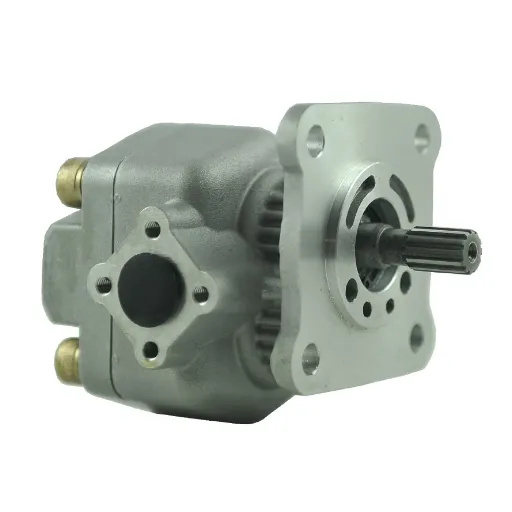
Step-by-Step Diagnostic Procedure
Visual Inspection
Start with a thorough visual inspection of the hydraulic system components. Looking for wears, leakages, or any form of physical damage may be necessary on hoses, fittings, and seals. Check the reservoir levels and observe the fluid to check for clear contamination-whether that comes in the form of water or particulates. Any abnormality should be recorded for further testing.
Hydraulic Fluid Check-up
Use the fluid analysis kit to check the essential fluid properties, which include: viscosity, contamination, and temperature. Test if these conform to the manufacturer’s specification. Aged or contaminated hydraulic fluid is the number one cause for system inefficiency; hence, if any hydraulic fluid is found outside acceptable, it should be replaced immediately.
Pressure Testing
Connect a hydraulic pressure gauge to the system’s pressure ports. Slowly operate the system while recording pressures at different points of reference. High or low pressure at any point may indicate causes like pump wear, valve malfunction, or obstruction in the fluid path. Always ensure the tests are conducted with load conditions so realistic results are obtained.
Evaluate Pump Performance
Measure the flow output of the hydraulic pump with a flow meter. A flow rate different from the acceptable value may indicate internal leakage or pump wear beyond the allowable limit. Then check the pump casing and driving members for some clues-patterns to such as abnormal noise or overheating operating conditions.
Test for Cylinder Leakage
Isolate hydraulic cylinders one at a time and test them internally or externally for leakage. A pressure-holding test may reveal a compromised seal within the cylinder. If the pressure drop is constant, the seals might need to be replaced or the cylinder repaired.
Inspect Control Valves
Control valve performances are analyzed through their actuation orderliness and response time. Sticky or sluggish valves could indicate contamination inside the valve housing, thus requiring cleaning or replacing. If the valves are electro-actuated, then proper electrical signals must be ascertained.
Monitor System Temperature
Use a thermal imaging camera or temperature probe to identify hotspots in the hydraulic system. Excessive heat generation indicates inefficiencies such as improper fluid viscosity, inadequate lubrication, or blocked routes in the cooling circuit. If temperatures are above the stipulated level, proper action must be taken.
Final Thoughts and Documentation
Consolidate all diagnostic results into one comprehensive report. Data such as fluid analysis results, pressure readings, and repair recommendations will constitute this documentation, which is essential for making well-informed decisions regarding maintenance and preventive strategies. The report is then shared with the maintenance team; corrective action is planned and carried out immediately.
By going through this contraction method of diagnosis, the operator and technician will systematically work toward the considered causes of hydraulic system failure, ensuring that the equipment is running with optimum reliability and efficiency.
Tools Required for Troubleshooting Hydraulic Problems
Specialized tools for hydraulic troubleshooting are very essential. There may be situations where very precise diagnoses are called for, requiring minimizing downtime. The tools may be many and varied depending on the specifics of the problems. Here is a detailed variety and purpose list of the tools:
| Tool | Purpose & Description |
|---|---|
| Pressure Gauges and Test Kits | Pressure gauges measure pressure at various points in the system to detect abnormalities such as low pressure, pressure spikes, or leaks. Computerized digital pressure gauges offer great advantages in measuring such forces and allow real-time data display. |
| Flow Meters | Measuring flow rate within hydraulic circuits, these meters are instrumental in diagnosing flow-related problems such as flow restrictions or pump inefficiency. High-precision flow meters will allow very detailed analyses of system performance. |
| Infrared Thermometer and Thermal Imaging Camera | Temperature-measuring devices such as infrared thermometers or thermal imaging cameras can detect whether a certain component is overheating or if the fluid in the system has already degraded, or if an obstruction is preventing heat dissipation in the system. |
| Hydraulic Hose and Fitting Leak Detectors | Specialized leak detectors, including ultrasonic ones, can be used to locate leaks without further damaging the equipment and instead facilitate quicker repairs. |
| Multimeters | These handy instruments test electrical components in the electro-hydraulic systems, measuring voltage, current, and resistance to determine if solenoids, sensors, and control circuits are performing their functions correctly. |
| Hydraulic Fluid Testing Kits | Fluid condition testing kits are for contamination checks, viscosity checks, and water content checks, as per the operation standards of hydraulic fluids. |
| Wrenches and Torque Tools | Wrenches and torque tools calibrated accurately ensure correct assembly and tightening of hydraulic components, thereby avoiding damage when fitting s loose or cracking caused by over-torque. |
| Service and Diagnostic Software | Each OEM diagnostic software can interact with electro-hydraulic systems to offer advanced troubleshooting insights such as real-time performance metrics and fault codes. |
With these tools available to technicians, diagnostic accuracy is enhanced, while also speeding up the debugging process. When combined with adequate knowledge of system schematics and its operational, these tools form the basic foundation to constitute the hydraulic maintenance and repair standards.
Checking Hydraulic Fluid Levels and Quality
Assessing hydraulic fluid levels and quality forms the foundation of efficiency and longevity of hydraulic systems. Firstly, the system should be fully depressurized while checking the fluid reservoir. The fluid level should be checked using calibrated dipsticks or sight gauges, with the machine in the correct operating position, since an incorrect position can provide inaccurate readings.
Meanwhile, assessing the quality of the hydraulic fluid involves several factors, such as viscosity, contamination levels, and thermal stability. Laboratory analysis of fluid samples for particulate contamination, water content, and chemical degradation should be done on a scheduled basis. High particulate content may indicate internal wearing or contamination of the system, while ingress of water lowers the lubricant’s efficiency and may cause corrosion.
Implementing predictive maintenance technology such as fluid sensors that can monitor real-time properties like viscosity and particulate density can further increase operational reliability. Operators will then be able to use a combination of precise measurement techniques and higher-level monitoring technology to optimize performance while preventing expensive failures of equipment.
Troubleshooting Tips for Kubota Hydraulic Systems
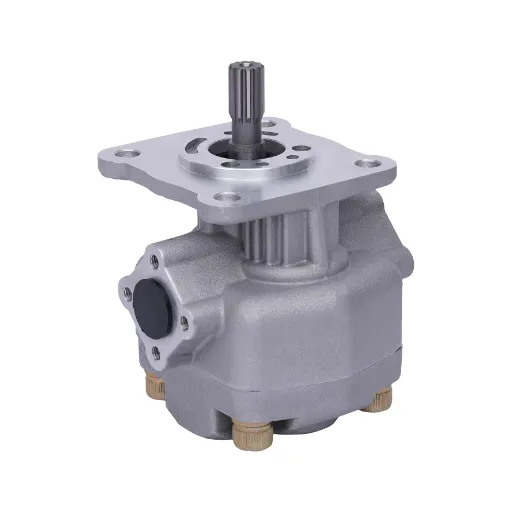
How to Identify and Repair Hydraulic Leaks
Hydraulic spills in Kubota hydraulic systems cause loss of efficiency or pressure drops and may even result in system failure. The process of leak detection involves systematically inspecting the critical system components: hoses, seals, fittings, primary elements, and valves. One should first visually inspect the elements and components for leaks; check, also, for oil seepage through worn-out connections or damages such as cracks or abrasions. A clean and dry surface of the system is very important for leak detection, so use an appropriate cleaning solvent before inspection. Having cleaned up, run the system under low pressure and watch for fluid discharge or droplet formation. Look at any strange behavior in the system, as in sudden drops in hydraulic pressure or system overheating, as these might be pointing to concealed leaks or pinhole leaks.
In actual cases of hydraulic leak repair, it is very important to fix the root cause of leak and not apply temporary fixes. For example, a cracked hose or fitting should be replaced with an OEM specification part compatible with the hydraulic fluid and pressure rating. As another example, damaged seals or O-rings should be replaced with high-quality ones that resist wear and fluid deterioration. During repair, verify the proper installation of all replacement components and torque connections to the limits specified by the manufacturer, thereby avoiding the chance of future leaks. Also, during repair, it would be wise to inspect neighboring components for further wear or potential failures.
Once the repairs have been completed, a thorough test of the system must be carried out to ensure that the leak is fully closed, along with the system operating within its optimum. Start by cleaning the repaired area thoroughly again, followed by gradually increasing hydraulic pressure to the working range. Watch the repaired section closely for any signs of resumption in leakage while checking system performance such as pressure stability, temperature regulation, and fluid consumption. A proactive maintenance schedule will go a long way toward preventing the recurrence of hydraulic leaks. Regular checks for fluid levels, periodic inspections of components under high stress, and changing consumables like seals and fluid filters as per manufacturer’s recommendations will ensure the system’s longer life and reliability.
Addressing Clogged Filters and Air Bubbles
Filters getting clogged and air bubbles are issues typically occurring in a hydraulic system, and they significantly decrease the performance of the system as well as compromise its integrity. A clogged filter is basically building up with contaminants over time until this exceeds the designed capacity of the filter. Such things restrict the flow of fluid and increase the pressure inside the system, which could lead to overheating. Clogged filters have to be detected through monitoring the pressure drop using pressure gauges or pressure sensors installed in the system. In the event of an excessive pressure drop beyond the level recommended by the manufacturer, it is crucial to replace or clean the filter element as soon as possible. A preventive approach can be to select filters with micron ratings appropriate for their application and have these filters checked regularly so that contamination buildup is kept to a minimum.
Conversely, air bubbles make the fluid somewhat compressible, thereby compromising system responsiveness, creating cavitation, and causing vibration or noise. One way of getting air into the system is through poor sealing of connections; others could be worn seals, or incorrect procedures for filling and replacing fluid. Entrainment or free air-induced cavitation is an extreme danger which erodes the inside of the components, including pump vanes and valves. Hence, the system must be degassed. Sometimes this is very simply done by allowing the system to work at low pressure for some time while the air dies out. The reservoir may be designed in such a way as to promote the separation of air from the fluid. Following the manufacturer’s directions during fluid replacement and maintaining an airtight seal upon completion of maintenance procedures will ensure that air ingress does not recur.
The optimization of system reliability can be applied through the use of advanced diagnostics to detect these issues early. Condition-monitoring sensors, for example, would provide data on the actual fluid cleanliness level and detect cavitation signals. If used, together with system design considerations like the sizing of the reservoir and the air-bleed-valve layout, they can reduce the risk introduced by clogged filters and air bubbles. The preventive maintenance path, based on pinpoint diagnostics and proper adherence to system specifications, goes a long way toward ensuring a robust high-performance hydraulic system over a long operational lifecycle.
Inspecting Hydraulic Cylinders and Pumps for Damage
Successful damage inspection forensic test of hydraulic cylinders and pumps requires both the methodical approach and thorough knowledge of all possible failure indicators. Hydraulic cylinders should be visually examined for external damage, like dents, scratches, or corrosion at the barrel that could affect their performance. There should be a particular emphasis on the seals and rods, as damaged seals, or bent rods can lead to fluid leakage, loss of efficiency, and eventual system downtime.
With hydraulic pump operation, major damage indicators include excessive noise or vibration: internal component wear could be present, or misalignment may be building up stresses within the unit; along with leakage from around the pump casing and fittings, worn-out seals or connection issues might also be implicated. Other signs include operational ineffectiveness such as lowered pressure output or sluggish response time, internal wear, cavitation, or contamination within the pump. Such techniques and tools as ultrasonic testing, thermal imaging, etc., can be brought to bear in specific diagnoses, where the issue is pinpointed well before they exacerbate.
A thorough inspection procedure should be based on precise historical data covering equipment and chronological maintenance records. By factoring in these practices and following strict adherence to guidelines offered by the manufacturer, existing vulnerabilities will be brought into focus, zapewniając through occlusion.
Practical Solutions for Common Hydraulic Issues
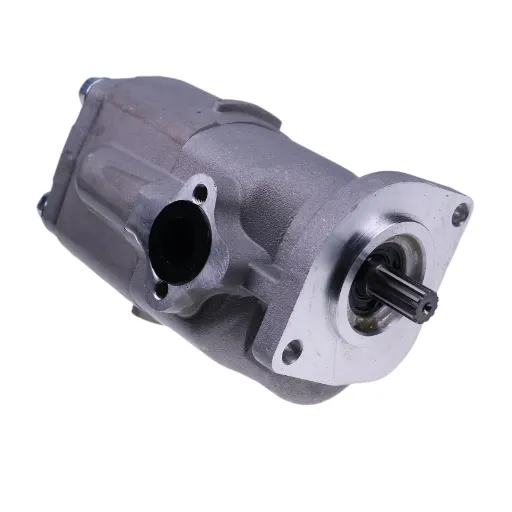
Simple Fixes for Minor Hydraulic Problems
🔧 Air Contamination in Hydraulic Fluid
Air contamination is a great variable that can cause spongy time responses, noise generation into the system, and decreased efficiency. To reverse this situation, seal all connecting points to avoid the ingress of air. The hydraulic system should be bled from any air following the recommended method by the manufacturer.
🔧 Low Fluid Levels
Insufficient fluid in the hydraulic system causes temperature build-up and affects performance. Regularly verify the fluid level in the reservoir and top up as required with the recommended hydraulic fluid. Also, keep the reservoir clean and refrain from overfilling to avoid spillages and contamination.
🔧 Clogged Filters
Leaks and loose fitting cause pressure drop and fluid loss. Always inspect hoses, couplings, and seals for wear and damage. Tighten loose fittings as much as possible and replace any component showing signs of excessive wear.
🔧 Incorrect Operating Temperatures
Using the hydraulic system outside its designed temperature range can cause fluid degradation and component wearing away. Monitor the temperature gauges on the system and ensure that the cooling system, if one is present, is operating efficiently. Use the correct grade of hydraulic fluid to ensure ideal operating conditions.
It is by placing a continued focus on these little issues that one can increase their hydraulic equipment’s lifespan and reduce the downtime. Systematic monitoring and preventive measures will ensure efficiency and reliability.
Complex Repairs: When to Call a Professional
While annual or quarterly maintenance can often be done within the company, highly technical or complex hydraulic repairs require the skills of experienced professionals to prevent further damage and maximize system performance. Situations such as pump failures, actuator malfunctions, and valve system malfunctions call for exact diagnostic instruments and particular technical knowledge. Without proper technical training, safety can be compromised, systems can be wrongly reassembled, or malfunctions can be exacerbated.
⚠️ Signs You Need Professional Intervention:
- Inefficiency within the system despite normal maintenance
- Repeated incidents of fluid contamination
- Occurrence of unusual noises or vibrations
- Astoundingly absent pressure
Experienced technicians systematically apply modern tools such as hydraulic test benches, flow meters, and diagnostic software to address such issues.
Making use of professional services warranties the repair to be executed per manufacturer specifications, thereby extending system longevity and keeping in line with general industry standards. By entrusting complex repairs to experienced technicians, a company can greatly reduce unnecessary downtime while keeping its hydraulic systems dependable and safe.
Replacing Hydraulic Components: A Guide
Replacing hydraulic components involves a structured process to ensure system performance, safety, and reliability. Here is a guide outlining the critical steps that may be needed on such tasks:
Step 1: Identify Worn or Faulty Components
Perform a thorough inspection of the hydraulic system to identify any parts that are not performing well. Parts frequently replaced are hoses, seals, pumps, valves, and cylinders. Confirming the performance anomalies will mean the use of proper diagnostic tools like pressure gauges and flow meters. It is also helpful to use operational data together with the system schematics for an accurate analysis.
Step 2: Depressurize the System
Before any component removal, it is important that the system pressure be relieved safely to prevent any inadvertent fluid release, which could cause injuries. The equipment manual should contain the exact procedure for depressurization.
Step 3: Choose OEM-Approved Components
To conserve system integrity and keep the system at par with requisite performance levels, the standard procedure would be to replace faulty parts with OEM-approved ones. OEM parts are built to exact specifications in terms of pressure, temperature, fluid compatibility, and fitment.
Step 4: Clean Disassembly
Remove the defective part with extreme care to avoid any kind of contamination in the hydraulic circuit. Use protective caps and plugs for open ports and lines, thus sealing them from any possible ingress of debris or moisture during the period.
Step 5: Check Adjacent Parts
While the system is disassembled, assess neighboring parts for potential wear or misalignment. A timely replacement may be warranted when such components are close to the end of their lifespan, thus averting future downtime.
Step 6: Install New Component
Install the new component correctly, adhering to the manufacturer’s requirements. Use a calibrated torque wrench to tighten fittings and connections to the specified value, being careful not to overtighten and cause leaks.
Step 7: Fill and Bleed the System
Refill the hydraulic system with the correct fluid as recommended by the manufacturer. Bleed the air out of the system, so that it operates smoothly and harmoniously. Air bubbles might lead to cavitation or jerky movements.
Step 8: Performance and Leak Test
Run operational tests under controlled scenarios to observe the functioning of the replaced component. Monitor the system closely for leakages, pressure irregularities, or abnormal sounds.
Step 9: Document the Replacement
Keep a written record of the component replacement with details such as the date, part number, and technician comments. This record helps trace the service history and assists in future diagnostics.
Following these detailed steps using trusted diagnostics and parts will increase the performance and life of your hydraulic system while reducing possible disruption to its operation.
Preventative Maintenance for Smooth Operation
Regular Checks and Fluid Changes
Inspections and fluid changes performed in due time are essential to keep hydraulic systems efficient and reliable. Begin with routine checks of the system components like hoses, seals, or fittings that may present wear, leaks, or incidental points of failure. Even minor damages may eventually translate into operational difficulties or larger downtime costs if neglected.
Hydraulic fluid analysis is just as crucial. Testing fluid samples in respect of viscosity, contamination, and degradation present a detailed view of the condition of the system. For example, particulate contamination abrades and damages the internal components, while degraded fluid fails to lubricate or dissipate heat adequately. Using hydraulic fluid analysis data such as ISO cleanliness codes or water content percentage helps in assessing whether the fluid must be replaced or filtered.
Always adhere to fluid change intervals as specified by the manufacturer. In return, allow only quality-grade fluids meeting the specifications stipulated to prevent compatibility issues and maintain the usual internal standards. The above-noted preventive approach together with recording inspection results and maintenance action taken helps to avoid unscheduled breakdowns, improve operational productivity, and extend the system’s useful life.
Best Practices for Maintaining Hydraulic Systems
A structured maintenance method emphasizing preventative and condition-based strategies is critical for attaining maximum efficiency and reliability from a hydraulic system. Regular monitoring of levels and filtration in hydraulic fluids can provide a window of opportunity to detect wear and early contamination of the system or components with rises in certain. Utilize statistical instrumentation and analysis with equipment such as particle counters and bulk fluid analyzers to monitor for fluid cleanliness and detect any particulates that could precipitate in component degradation.
Another key aspect of the integrity of a hydraulic system is temperature management. Heat causes a buildup of fluid degradation, and with it, the efficiency of hydraulic components is also diminished. Ensuring that cooling systems are functioning properly and accepting the existing thermal thresholds defined by the manufacturer within which the operation should take place are two factors that will ensure long-term operating performance.
In addition, it is extremely important to maintain periodic calibration and testing of pressure control valves so that the systems always operate at some safe and efficient pressure values without posing an unnecessary strain on the components. When these techniques are embedded within an automated monitoring environment, their status is reported in real-time; such inbuilt diagnostics then advance predictive maintenance and lessen the risk of downtime.
Tips for Long-Term Reliability of Kubota Tractors
✓ Follow Manufacturer’s Service Intervals
Regular maintenance is the first step in any service of agricultural or turf equipment, laying the groundwork for long-term reliability. Undergo a manufacturer’s recommended servicing interval of big-ticket items like the engine, transmission, or hydraulic systems. Factor in frequent inspections of filters, fluids, and belts because the deterioration of these contributes further downstream into problems that affect performance. By promptly replacing consumables like fuel or air filters, they keep the efficiency and life expectancy of the tractor.
✓ Maintain Proper Lubrication and Cooling
Correct lubrication and the cooling system are maintained. If all moving parts are properly lubricated, they will experience less friction and wear-a good thing, so it will move on smoothly. One should keep the coolant level right and clean radiators often so that overheating is avoided from the outside. Test and verify that thermos and water pumps are functioning within design parameters from time to time.
✓ Integrate Diagnostic Tools and Monitoring Systems
Work with modern technology and integrate diagnostic tools and monitoring systems wherever required. These systems help in providing real-time information about engine performance, fuel efficiency, and possible fault conditions, which can guide developers to plan for coming preventive maintenance. The Kubota tractor is thus protected by these tools and good working practices like proper storage to prevent refusal due to harsh environmental conditions. These detailed practices ensure the equipment to remain reliable and efficient even when subjected to demanding agricultural works.
Frequently Asked Questions (FAQ)
Q: What are some typical symptoms of Kubota tractor hydraulic problems?
A: The most common symptoms of Kubota tractor hydraulic problems are loss of hydraulic power; slowness in hydraulic implements; and abnormal hydraulic system noises. A few signs confirming that damage may exist are leaking hydraulic fluid or other external problems on the hydraulic hoses.
Q: What should I do to troubleshoot the low hydraulic fluid in my Kubota tractor?
A: First, check the hydraulic fluid level and check for leaks along the hydraulic lines. If fluid is low, refill and top it off properly, ensuring the fluid is clean. It might then be best to change the hydraulic fluid and filter to remove any possible contaminants if the problem continues.
Q: What should I check if my Kubota tractor is having hydraulic fluid flow problems?
A: When dealing with a hydraulic fluid flow issue, check for clogging of the hydraulic filter and look for any wear or damage in the hydraulic lines. Make sure the hydraulic control valves are working properly, because any valve problems would contribute to restricting the fluid flow.
Q: How would I recognize internal problems in the hydraulic system of my kubota tractor?
A: Some of the symptoms that might denote internal issues would be the erratic operation of hydraulic components, sudden loss of hydraulic pressure, and overheating, among others. Identifying these problems with something like monthly maintenance or proper troubleshooting techniques might save major damage later in life.
Q: Why is it important to bleed the hydraulic system on a kubota tractor?
A: Having the hydraulic lines or systems bled would be required in case air had entered the system, giving rise to erratic performance and loss of hydraulic power. Hydraulic systems work with a constant pressure, and that pressure can only be maintained in the absence of air.
Q: How often does my Kubota tractor need to have its hydraulic fluid and filter replaced?
A: They are usually changed every 400 operating hours or a minimum of once per year dependent upon how much that tractor works. Frequent changes are needed to keep the oil clean and therefore to protect the hydraulic system from wear, tear, and potential issues.
Q: What are some of the problems that can arise when oil levels are low in the hydraulic system?
A: If the oil level gets too low, it will not touch the hydraulic components adequately for lubrication and cooling purposes. The components will thus sustain more wear or become damaged, raising temperature inside and eventually leading to engine or tractor hydraulic system issues, not being dealt with in time.
Q: Can engine oil affect the performance of my kubota tractor’s hydraulic system?
A: Yes, engine oil can affect the performance of the hydraulic system if it gets into the hydraulic fluid. Contamination of the fluid reduces its efficiency and causes damage to hydraulic components. The hydraulic fluid must be kept separate from engine oil, and both should be monitored for any incidents of cross-contamination.
Q: What parts should I replace to fix a hydraulic problem?
A: Should issues be raised concerning the hydraulic system, worn or damaged hoses, seals, and filters should be examined for replacement. Next, inspect the hydraulic pumps and valves, replacing these as necessary, to allow the tractor hydraulic system to passaintly perform.
Keep Your Kubota Running Smoothly
By following these comprehensive troubleshooting tips and maintenance practices, you can ensure your Kubota tractor’s hydraulic system operates at peak performance for years to come. Regular inspections, timely fluid changes, and prompt attention to issues will save you time, money, and frustration in the long run.



